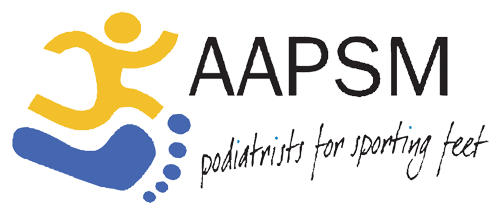Corns and Calluses
If you are suffering from painful corns and calluses, the good news is that you don’t have to do so anymore.
Our exceptional team of podiatrists at Gold Coast Foot Centres will not only treat them for you but also establish the causes and recommend ways to stop them from returning.
Please contact us today to expedite your recovery.
What are Calluses?
Calluses are hardened patches of thickened skin that often manifest on feet and hands.
Typically, they develop in localised areas where there has been repeated pressure or high friction and is your body’s attempt at preventing breakage or further skin irritation.
While they are not ordinarily painful, they can be if the friction or pressure is continual, as it initiates a response from your body that builds up your skin to a particular thickness that becomes quite uncomfortable.
In such circumstances, due to the presence of the callus, you might find that your shoes are not fitting you as well as they previously were.
What is a Corn?
Corns are quite similar to calluses in the sense that they are thickened areas of skin that are caused by friction and pressure. That said, there are some key differences that separate them.
For instance, a corn is usually smaller than a callus and has a much more painful "core" centre as a result of the surrounding skin being inflamed. Subsequently, as it becomes more prominent and thicker, it grows inwardly into the deeper layers of your skin, which makes it a lot more painful and uncomfortable.
Often, corns appear on the soles of your feet or other areas of skin that bear weight. These are called hard corns because as the skin has adapted to the friction, its painful "core" has hardened.
Sometimes corns can appear on parts of your foot, such as in-between toes, that are non-weight-bearing areas. They are referred to as soft corn and appear as a grey/white colour that has a thin and soft texture.
These types of corn tend to form where the skin’s surface is prone to sweating or moisture and, therefore, is damp or has not been dried properly after a shower.
What are the Symptoms of Calluses and Corns?
Often, small calluses or corns won’t show symptoms other than their physical presence. However, larger ones might cause discomfort and pain, which could impact your ability to walk freely.
Occasionally, calluses and corns can occur concurrently, the latter sometimes forming underneath the former.
Both have slightly different symptoms. If you notice any of the below, then you might have a callus present:
Thickened skin, which is harder than what is around it.
Thickened skin distributed evenly over a particular area.
Slight yellow discolouration in the area of hardened skin.
Although they can present with the above symptoms, you might have corns if the area is painful or if it feels like you are standing or walking on a rock.
Additionally, corns that form between your toes might be soft and white or hard and yellow.
What are the Causes of Corns and Calluses?
Both corns and calluses develop as a defensive response from your skin when repeated friction and pressure are applied to the skin of your feet.
Such friction or pressure might be caused by the following:
Certain foot conditions where bones reside closer to the surface of the skin
Dry skin
Feet with high arches that put excessive pressure on the outside of your feet.
Ill-fitting footwear that is too narrow or tight and causes them to rub against the footwear or feet, or footwear that is too loose and results in you sliding against your shoe.
Previous surgery or trauma that has changed your feet’s structure and caused excessive pressure to be exerted on other parts of the foot.
Prolonged periods of standing up
Poor mobility and motion in your joints
Repeated pronation of the foot where your arch inwardly collapses whilst walking creates constant pressure around the front of your toes and feet.
Specific running or walking patterns that place extra pressure on a particular area of the foot.
How Do You Diagnose Calluses and Corns?
It is vital to get corns and calluses professionally diagnosed by a specialist podiatrist such as Gold Coast Foot Centres.
As they can easily be mistaken for other skin conditions, including ulcers, plantar warts or even the presence of a foreign object, you’ll want to ensure you receive the proper treatment for your condition.
When diagnosing your affliction, our expert team will conduct a physical examination and consider the history of your skin condition.
In rare occurrences, they might deem it necessary to take images, predominantly to rule out the presence of foreign objects or other underlying conditions.
How Do You Treat Calluses and Corns?
You’ll be pleased to read that calluses and corns can be easily treated by a professional podiatrist, such as those employed by Gold Coast Foot Centres.
Here is a general overview of how we treat both conditions.
Calluses
A podiatrist can easily remove calluses by debriding the hardened skin. However, it is essential to note that unless you remove what is causing it, the callus will continue to return every month or two.
In addition to debridement, our podiatrist may carry out or suggest the following treatments:
Nourishing and moisturising the skin of your feet with a dermal foot balm. This is similar to a moisturiser but comprises urea, which significantly increases its effectiveness.
Gently rubbing a pumice stone on the calluses without irritating the surrounding skin too much.
Additionally, they may recommend countering the causes of high pressure or friction through:
Suggesting the best footwear for your particular foot shape.
Making custom prescribed insoles to reduce the pressure and friction and help you walk comfortably without pain.
Ankle and foot strapping.
Exercises that enhance flexibility, strength, and mobility to help your feet function correctly.
Corns
The way we treat a corn is quite similar to callus in that our podiatrists would recommend a mix of the same treatments. That said, the other thing they might do is scoop out the painful core of the corn with a scalpel, as this will remove the sensation of 'walking on a rock'.
Under no circumstances should you try to remove the callus or corn yourself. This could potentially damage the surrounding blood vessels of healthy tissue and result in you experiencing scarring, infection or pain.
What can happen if I ignore a corn or callus?
If you ignore a corn or callus, it can gradually increase in size and pain, which could then potentially lead to a range of complications, such as:
Deepening foot or heel pain while walking
Infection due to skin breakdown
Bleeding cracks
Difficulty walking
Medical intervention to remove the thickened skin (in severe cases)
For this reason, it is important to contact our specialist team of Gold Coast Podiatrists if you have persistent corns or calluses.
How Can I Prevent Corns?
It is always better to be proactive in preventing corns and calluses than reactive in trying to deal with them.
Thankfully, there are a few things you can do to reduce your likelihood of getting them, the most important of which is to wear well-fitted and comfortable shoes that give your toes plenty of room to wiggle. If they don’t, your footwear is too tight and should be replaced.
It’s not a good idea to wear high heels regularly as they may increase friction, and you should always wash your feet thoroughly every day and dry them properly. Once you’ve done this, apply moisturiser to keep your skin smooth and soft.
Are Corns or Calluses Causing You Grief?
If you have been soldering on with the discomfort of corns and calluses for a while, now is the time to do something about it.
Our expert podiatrists at Gold Coast Foot Centres can help alleviate any pain you might be feeling, identify what is causing them to form and help you take the right steps to ensure they don’t come back.
Call us today on 07 5539 4484 or contact us here.
FAQs
-
While they are an easily accessible, over-the-counter solution, we do not recommend our patients use corn pads. We do not believe they help remove the corn’s painful core, and they can macerate and burn the surrounding skin.
-
An experienced podiatrist can get rid of a callus during your consultation. That said, unless you identify and act against what caused it, there will be another build-up within one to two months, which may require another debridement.
-
Yes, some people experience discomfort from foot corns because they create a painful pressure area that forms internally within the skin layers.
-
Generally, most people do not suffer from any pain due to minor calluses. But, if they are not treated, they could worsen and eventually result in heel cracks or localised pain.
-
The best way to eliminate corns is to seek treatment from a specialist podiatrist. They may use a mix of strategies, including debridement, nourishing your skin, and ensuring you wear the correct shoes to relieve the condition.




